MARIANI’S
Virtual
Gourmet
JUNE 28,
2015
NEWSLETTER
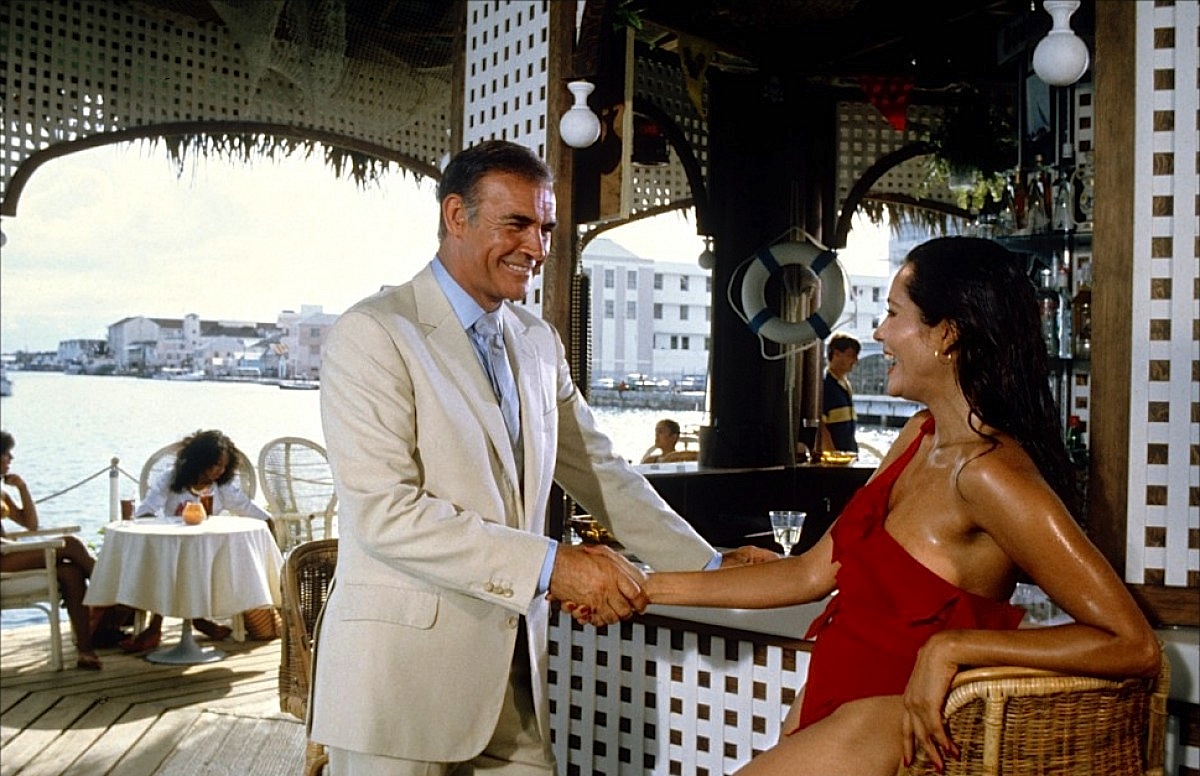
Sean
Connery and Barbara Carrera in"Never Say Never"
(1983)
IN THIS ISSUE
DINING OUT IN HOUSTON
By John Mariani
NEW YORK CORNER
PONTY BISTRO
By John Mariani
NOTES FROM THE WINE CELLAR
WHAT I'M DRINKING NOW
By John Mariani
❖❖❖
NO PROBLEM DINING OUT
IN HOUSTON
By John Mariani

Houston Space Center Control in the film "Apollo 13" (1995)
Houston
long
ago belied its food media image as a place
just for great barbecue (which it has little
of) and mediocre Tex-Mex (which it has a lot
of) and steakhouses (mostly chains). So
when NY-based food writers want to get all
hipster about Houston, they head for
out-of-the-way ‘cue pits, taco stands, the
occasional Vietnamese seafood place, and
places serving the most eccentric Modernist
fare, like The Pass and Oxheart.
They usually ignore the
fine dining spots completely, like Brennan’s of Houston,
have little interest in Houston’s Italian
restaurants, and even snub Robert Del Grande’s
pioneering efforts in New Texas Cuisine in the
1980s; he now runs the superlative RDG + Bar Annie,
which the
Houston Chronicle lists as 65th best in the
city, way below Bernie’s Burger Bus (#45), Pizaro’s
Pizza Napoletana (which is BYOB; #28), and Good Dog
Houston (hot dog truck at #23).
My preferences (dare I use the
un-hip word “standards”?) are for restaurants that
show off Houston’s finest, not its most gimmicky,
places that speak of
the city’s more sophisticated dining scene,
which would include Pappas Steakhouse, with
its polished look and great wine list; Underbelly,
where Chef Chris Shepherd has embraced and
beautifully translated all the food cultures of his
beloved city; Hugo’s, which for a decade has
run against the grain of Tex-Mex by serving
top-notch Mexican cuisine; and the crusading Americás,
which gave the green light to modern Latino food and
service.
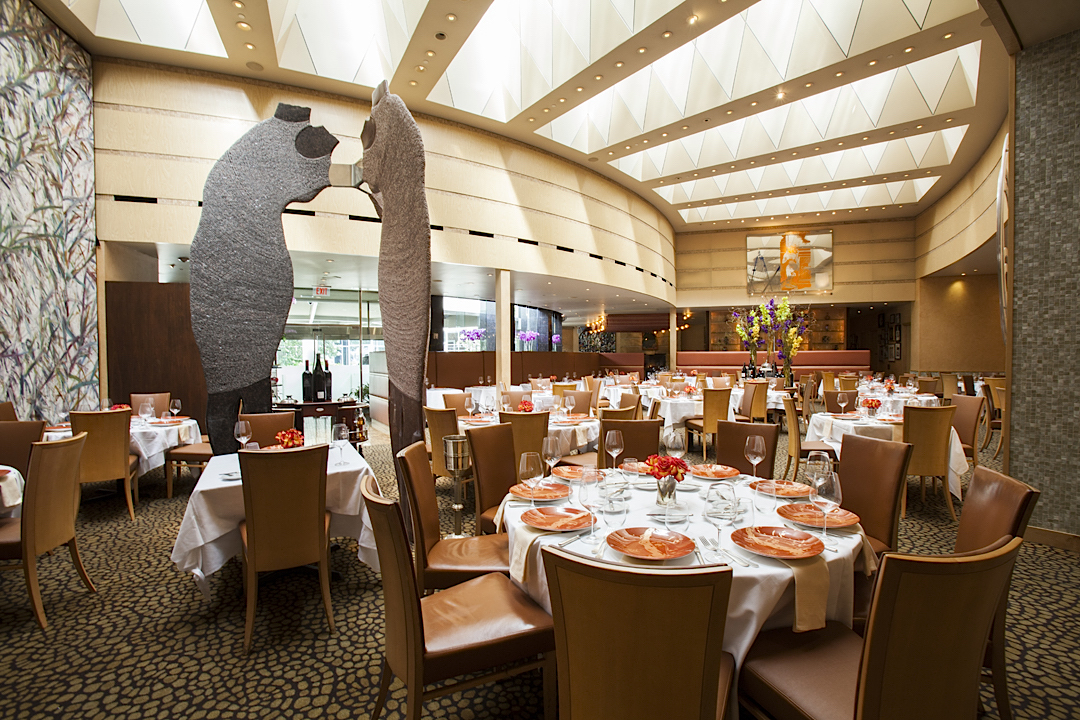 TONY’S
TONY’S3755 Richmond Avenue
713-622-6778
tonyshouston.com
There is certainly no better
restaurant of any stripe in Houston than Tony’s,
which began as a modest eatery back in 1965 and
evolved into a swanky red brocade dining room
serving excellent continental cuisine, and then into
an Italian restaurant of daunting excellence. I would
rank Tony’s with the best anywhere in the U.S. and
many in Italy itself.
The ever-fretting, never-still
owner, Tony Vallone, is manic about his ingredients,
ferreting them out on trips with his cooks to Italy. He is
equally insistent that the best of Old School
manners are shown to his guests, who in turn show up
well dressed.
Linens are soft and wineglasses thin, the
wine list, with more than 1,000 labels, is one of
the largest and best selected in the country, and Tony is
always at his namesake restaurant, lunch and
dinner, to greet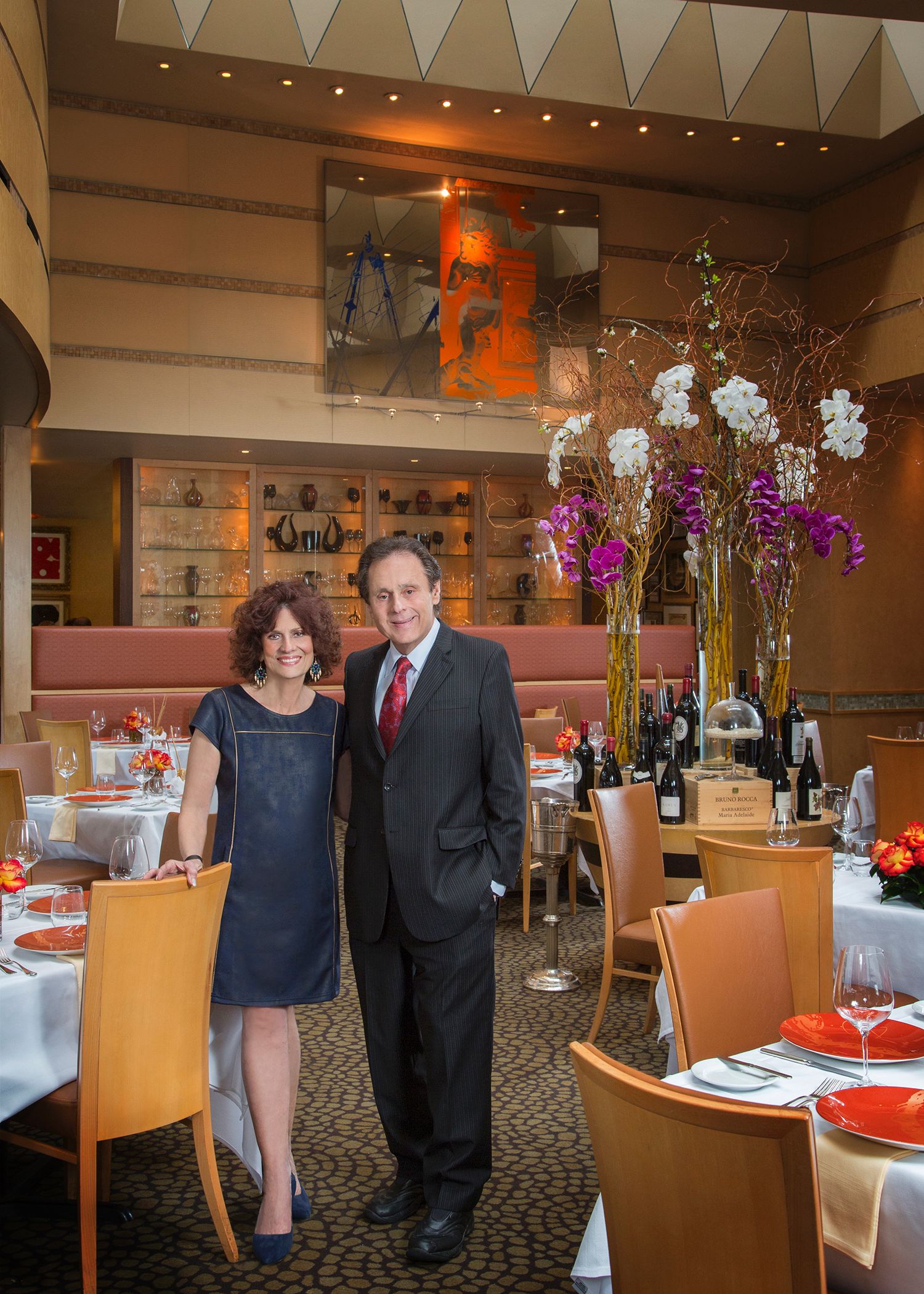 old and new
friends, who have included over the years everyone
from the late Luciano Pavarotti to the Bush family.
old and new
friends, who have included over the years everyone
from the late Luciano Pavarotti to the Bush family.
The
newest incarnation of the restaurant (the third) has
a grand design, with an arched dining room with a
high, angled, skylighted ceiling, a 12-foot,
free-form sculpture--“The Three Graces” by Jesus
Moroles--an intimate “Wine Library Room” with a
spectacular Venetian glass chandelier, and a wine
cellar that seats 60.
The menu is always sumptuous,
from the crudi
seafood tastefully garnished to the white truffle
soufflé that’s become a seasonal specialty. The
pastas always toe a line of tradition while
absorbing heightened flavors in dishes like
tortellini in chicken broth with Cerignola Olives,
Texas rabbit,
and artichokes; perfect spaghetti alla carbonara
(left); fettuccine
with soft-shell crab, vodka sauce, and
house-made sausage; and risotto with fresh abalone,
mushrooms and lobster roe.
Gulf redfish is seared and
treated to blood orange essence, stone-ground
mustard and lump crabmeat. Center-cut lamb chops
from Colorado are generous, tender, well-fatted and
delicious, while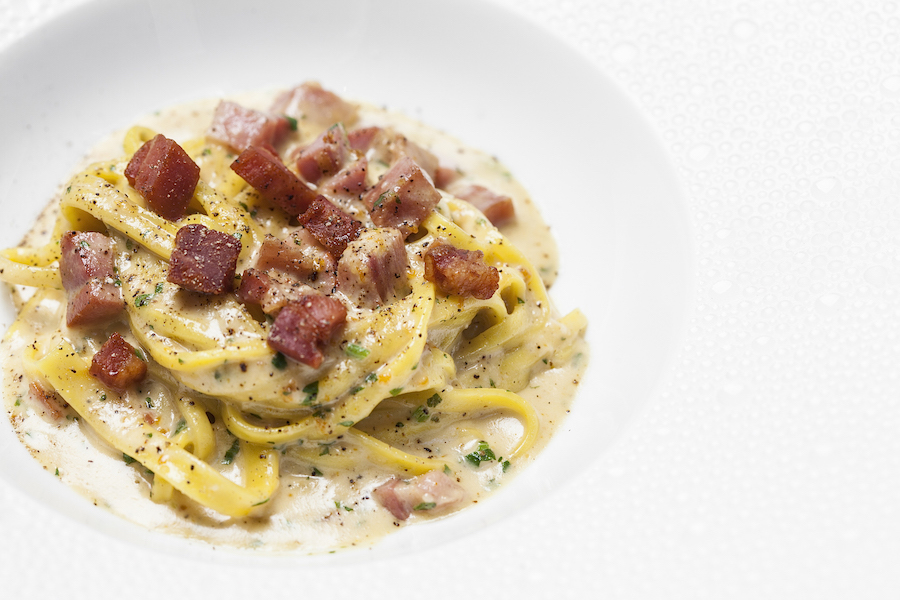 Sicilian lemon chicken
is one of the most requested items on the menu.
Duckling (for two) is sided with black Venetian
rice, and tangy-sweet Bing cherry sauce.
Sicilian lemon chicken
is one of the most requested items on the menu.
Duckling (for two) is sided with black Venetian
rice, and tangy-sweet Bing cherry sauce.
Donna and Tony Vallone
The current chef--whose food I have not yet
sampled--is a new one: Kate
McLean, a Houston native and the first woman
to hold the position at the restaurant, having risen
from sous-chef after training in Seattle, Hawaii,
and Provence.
When you enter Tony's
you will be cordially greeted, taken to your
well-set table, and, after a while, you’ll find Tony
himself beside you, very happy to see you, welcoming
a newcomer, making some suggestions from the
specials, and wishing you the best meal of your
life, which it may well be.
Open for lunch Mon.-Fri., for dinner
Mon.-Sat. Dinner prices for starters run $14-$39,
pastas $12-$19, and main courses $38-$110.
Quattro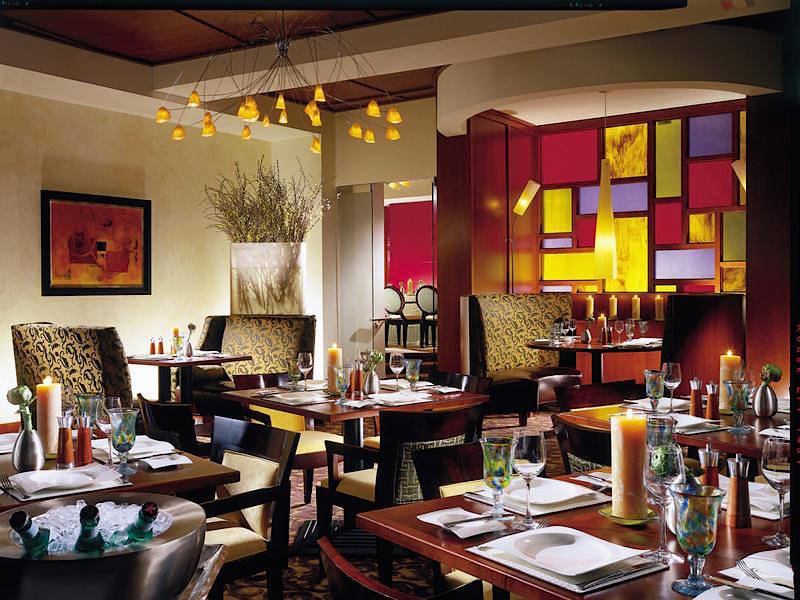
Four Seasons Hotel
1300 Lamar Street
713-276 – 4700
Born and raised in Vercelli in
Italy’s Piedmont region, Ferrarese worked at the
Four Seasons Hotel Firenze restaurant, a highly
refined dining experience now translated by him to
a more casual Houstonian idiom, balancing Italian
and American ingredients throughout his menu.
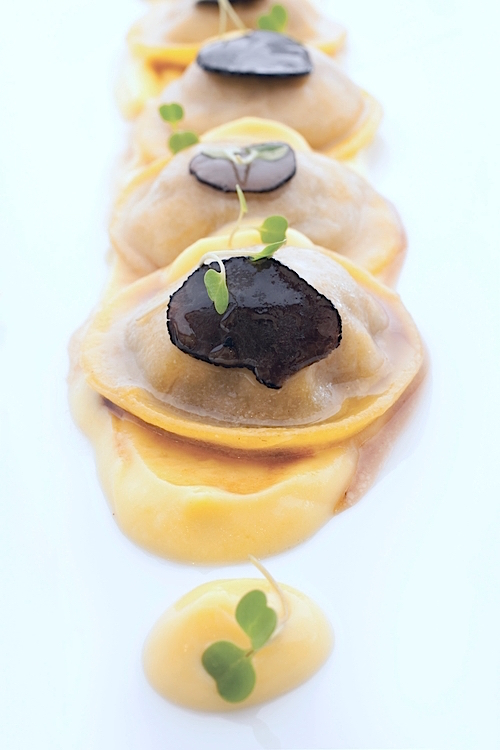 You might
begin with a playfully perfect vitello tonno
tonnato, which adds a slice of tuna to a dish
traditionally made only with veal and creamy tuna
sauce. Pastas (available as half and full portions)
include the bread dumplings called passatelli,
with striped bass, lobster, clams and shrimp in a guazzetto
bath of white wine, garlic, parsley and tomato. His
lasagne alla
bolognese uses rich Texas Akaushi-style beef
along with a rich ricotta fondue, and he adds a
quail egg yolk to his gnocchi with fontina sauce.
You might
begin with a playfully perfect vitello tonno
tonnato, which adds a slice of tuna to a dish
traditionally made only with veal and creamy tuna
sauce. Pastas (available as half and full portions)
include the bread dumplings called passatelli,
with striped bass, lobster, clams and shrimp in a guazzetto
bath of white wine, garlic, parsley and tomato. His
lasagne alla
bolognese uses rich Texas Akaushi-style beef
along with a rich ricotta fondue, and he adds a
quail egg yolk to his gnocchi with fontina sauce.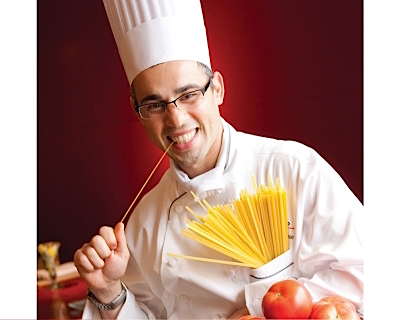 Ferrarese knows well how to reduce to
a rich density the sauce in braised short ribs,
carrots and adds a crispy potato croquette, and he
does a combination of lamb chop, lamb “porchetta,”
sweet potato, and asparagus.
Ferrarese knows well how to reduce to
a rich density the sauce in braised short ribs,
carrots and adds a crispy potato croquette, and he
does a combination of lamb chop, lamb “porchetta,”
sweet potato, and asparagus.
Desserts
get a bit more Texan, with items like pecan pie and
a granola bar.
At lunch, you have the option of
one of the best pizzas in a city lacking in that
department, as well as a chicken panino with
mozzarella, tomato, basil, pesto and avocado.
After several tries, this Four
Seasons dining room has come into its own, and
Ferrarese is very much his own chef, so go with what
he wants you to taste and you’ll trust him again and
again.
Quattro is
open for breakfast, lunch and dinner daily.
Lucille’s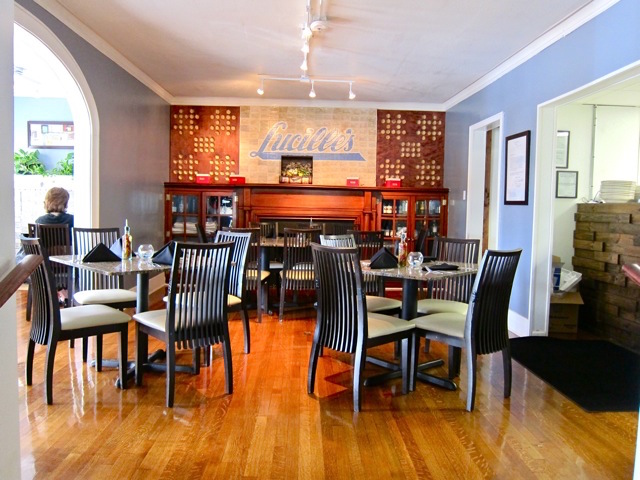
5512 LaBranch
713-568-2505
lucilleshouston.com
Once upon a time a woman named Lucille Bishop
Smith (below)
became famous for serving visiting potentates and
sports heroes her soft rolls, chili biscuits and
barbecue. She
was a Houston entrepreneur who in 1937 at Prairie
View A&M College developed the first
college-level Commercial Foods and Technology
Department, incorporating an apprentice training
program for which she wrote the service training
manuals.
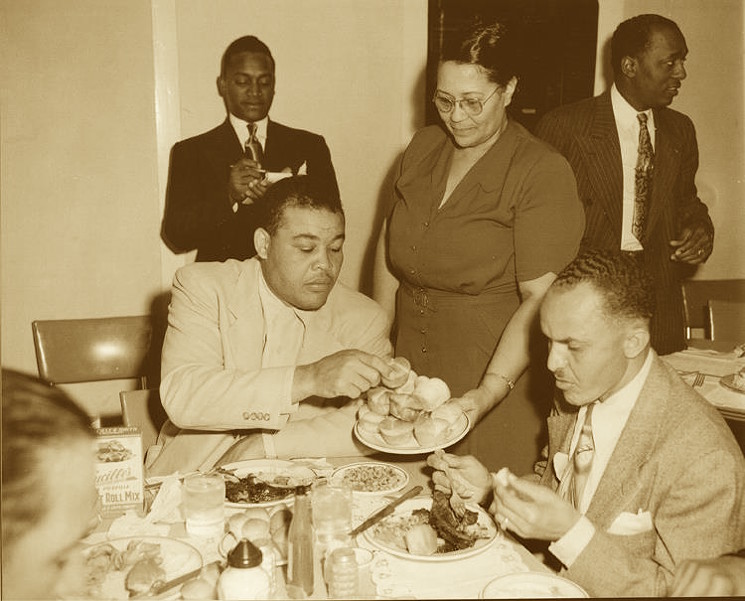 In
1941 Smith wrote index-card file recipes for Lucille’s
Treasure Chest of Fine Foods, which went
through many editions. She also came up with a recipe
for Lucille’s All Purpose Hot Roll Mix as a
fundraiser for her church, and it became so locally
famous that she sold it as the first hot roll mix to
be marketed in the U.S. Still later, she became
founder and president of her family-owned
corporation, Lucille B. Smith’s Fine Foods Inc., as
well as owner of U.S. Smith’s Famous BBQ (left) in Fort
Worth.
In
1941 Smith wrote index-card file recipes for Lucille’s
Treasure Chest of Fine Foods, which went
through many editions. She also came up with a recipe
for Lucille’s All Purpose Hot Roll Mix as a
fundraiser for her church, and it became so locally
famous that she sold it as the first hot roll mix to
be marketed in the U.S. Still later, she became
founder and president of her family-owned
corporation, Lucille B. Smith’s Fine Foods Inc., as
well as owner of U.S. Smith’s Famous BBQ (left) in Fort
Worth.
Born out of Ms. Smith’s
inspiration, her grandson, Chris Williams, who has
trained in kitchens in America, London and Europe,
opened Lucille’s in her honor, serving Southern
classics with a modern twist that is all his.
Set within a turn-of-the-century
home in the heart of the city’s museum district,
Lucille's is not just a restaurant that does what it
does better than any other in Houston but one that
both honors his grandmother’s work and builds 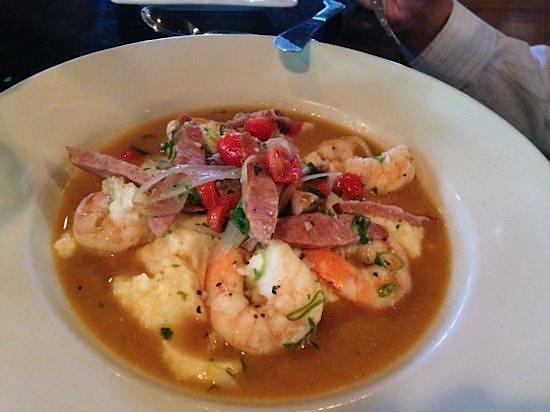 mightily
upon it. As
Williams says, “I love the relationship and respect
for ingredients that comes from being a chef. That
connection and link to traditions and practices and
techniques feel so right for me. Lastly, I am a chef
because it’s in my blood.”
mightily
upon it. As
Williams says, “I love the relationship and respect
for ingredients that comes from being a chef. That
connection and link to traditions and practices and
techniques feel so right for me. Lastly, I am a chef
because it’s in my blood.”
I had a fabulous and truly
educational lunch at Lucille’s, showing not how far
Williams has deviated from his origins but how much
he has refined them, beginning with those addictive
chili biscuits and fried green tomatoes made with
seasoned cornmeal and a spicy aïoli. Blue crab
beignets are treated to a Dijon aïoli with an apple
and celery salad, pickled mustard seed and lemon
essence, while shrimp and stone mill grits (right) pick up
big flavors from andouille sausage and a
sherry-tomato broth.
A
generous portion of pan-roasted chicken comes with fingerling
potato hash, broccolini and lemon-caper jus. And he
does an old-fashioned fish fry with basil,
corn-and-pepper maque-choux and greens—everything
here would have made his grandmother proud. And she
would have approved of all that her grandson does
with such a cheery, cordial and intelligent style
that shows in the down-home atmosphere of the place,
the amiable flair of his service staff, and the
generous cocktails he concocts.
Open
for lunch and dinner Tues.-Sun.
❖❖❖
By John Mariani
PONTY
BISTRO
218 Third Avenue (near 18th
Street)
212-777-1616
www.pontybistro.com
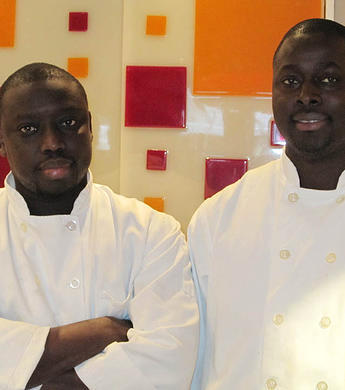 Senegalese
cousins
Chekh and
Cissé are further proof of the continuing
realization of the American dream. Having moved to
the U.S. in 1995
they, like so many immigrants, got work in the
restaurant business, gaining experience at Daniel
Restaurant, Vong and Mercer Kitchen before opening
their unique French-African restaurant near
Gramercy Park seven years ago. (They opened a
branch in Harlem last fall, too.)
Senegalese
cousins
Chekh and
Cissé are further proof of the continuing
realization of the American dream. Having moved to
the U.S. in 1995
they, like so many immigrants, got work in the
restaurant business, gaining experience at Daniel
Restaurant, Vong and Mercer Kitchen before opening
their unique French-African restaurant near
Gramercy Park seven years ago. (They opened a
branch in Harlem last fall, too.)
The premises do have a
traditional bistro look, with brown leather
banquettes, tiled floors, pale yellow walls, and
French doors, but the West African paintings and
wood sculptures lend the space more contemporary
color throughout.
So, too, the overly long menu
lists several French bistro favorites like poulet rôti,
gougères,
escargots and salade
Niçoise, along with Italian items like penne alla
vodka and lobster ravioli, and requisite
burgers. (Who
would come to such a restaurant and eat a burger?)
But the innovations here are clearly the West
African dishes, some with enchanting, mellifluous
names like niokolokoba
($30), which is a grilled
sirloin steak marinated with Senegalese spices and
served with splendidly crisp French fries and
sauce au
poivre.
The name commemorates a Senegalese National
Park.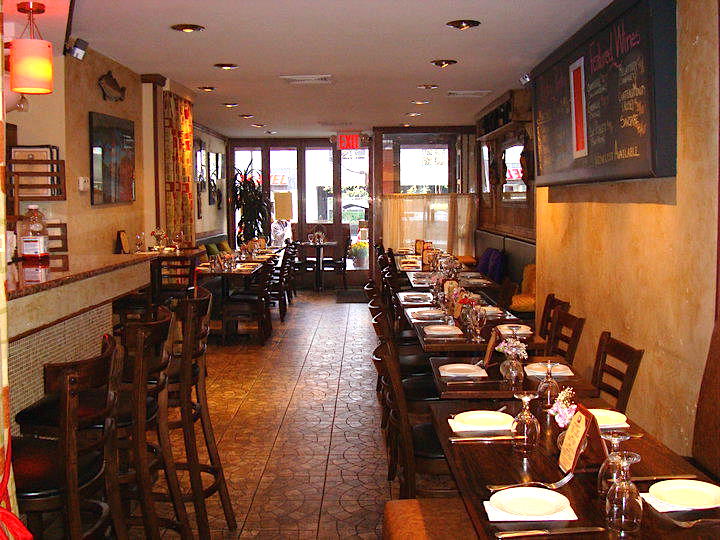
Start off with crispy chicken
rolls called nem ($10),
which I find were originally Vietnamese, brought
to West Africa by Vietnamese refugees; the crispy
tuna ($12) is riddled with big flavors of
cilantro, pickled soy ginger vinaigrette and
wasabi aïoli.
All the food here has a kick, not always a
hot one, but the use of sweet and sour is evident
throughout.
Truffled macaroni and cheese ($10) may not
have anything to do with Africa or France, but
Ponty’s version is a big square of lusciousness,
perfectly browned on the top.
The
Kasbah
lamb shank with merquez
sausages, five spices, steamy couscous and onion
sauce ($25) is deeply flavorful and a lacquered
mahogany color. A braised branzino ($27)
is the basis of a dish “a le guet
ndar," with salad and sweet plantains (below), whose
name evokes the fishing village St. Louis in
Senegal.
There are several mussel dishes here, and
we of course wanted to taste the moules
Africana ($12 as appetizer, $18 as main
course), a huge bowl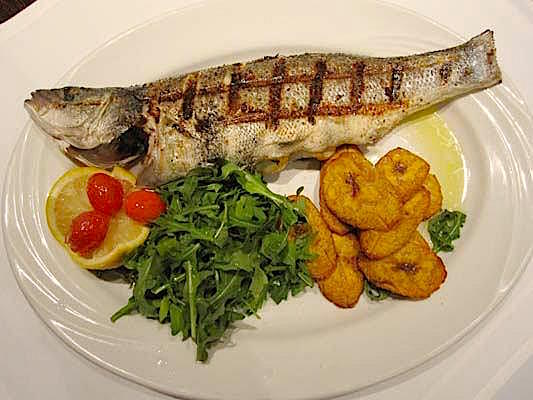 of
medium-sized sweet bivalves blended with African
spices and shallot garlic in a white wine sauce,
served with French fries. You may also try them
with a saffron sauce, Provençal style, or other
variations.
of
medium-sized sweet bivalves blended with African
spices and shallot garlic in a white wine sauce,
served with French fries. You may also try them
with a saffron sauce, Provençal style, or other
variations.
The desserts (all $7) are not exceptional
and quite predictable--tiramsù, cheesecake, tarte
Tatin--none Senegalese, which is a shame, because
what I read about the honeyed desserts of that
country make them sound delicious.
Perhaps owing to the restaurant’s size,
Ponty’s wine list is modest, with only a couple of
South African wines, when I would have expected
many more.
The street that Ponty Bistro is on is
inundated with the usual Italian, Indian, sushi,
Thai places that offer nothing out of the
ordinary. Clearly
Ponty Bistro does, and because of those African
novelties alone, it’s a place the Cissé brothers
should proud of.
Open
for lunch Mon.-Fri; brunch Sat. & Sun.;
dinner nightly.
WHAT I'M DRINKING NOW

By John Mariani
Memorial Day, Father’s Day, Fourth
of July, Lyndon Johnson’s birthday--all good
reasons to break out the good wines this summer,
which is not the same thing as the expensive
wines these days, when so many excellent values
are available, both in and out of the sale bin. Here
are some I’ve really enjoyed this month.
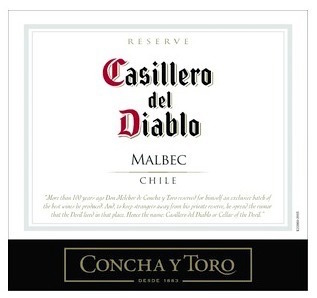
Casillero del Diablo Malbec 2013 ($12)—As noted, good things come in
inexpensive bottles, and this Chilean malbec from
Concha y Toro is of a kind that proves that
country’s eminence with this varietal. It’s
very well-fruited without being plummy, and its
13.5% alcohol makes the second glass as enjoyable
as the first.
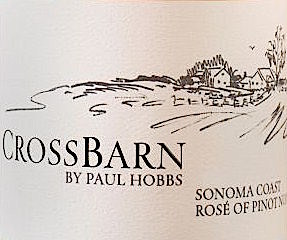
Paul Hobbs Cross Barn Rosé of Pinot Noir 2014 ($15)—The reputation of Paul
Hobbs for his Sonoma pinots translates
impressively into this charming rosé, at 12%
alcohol, so that the fruit and the acids are of
equal weight and the floral flavors make it such a
good wine for summer seafood or pork.
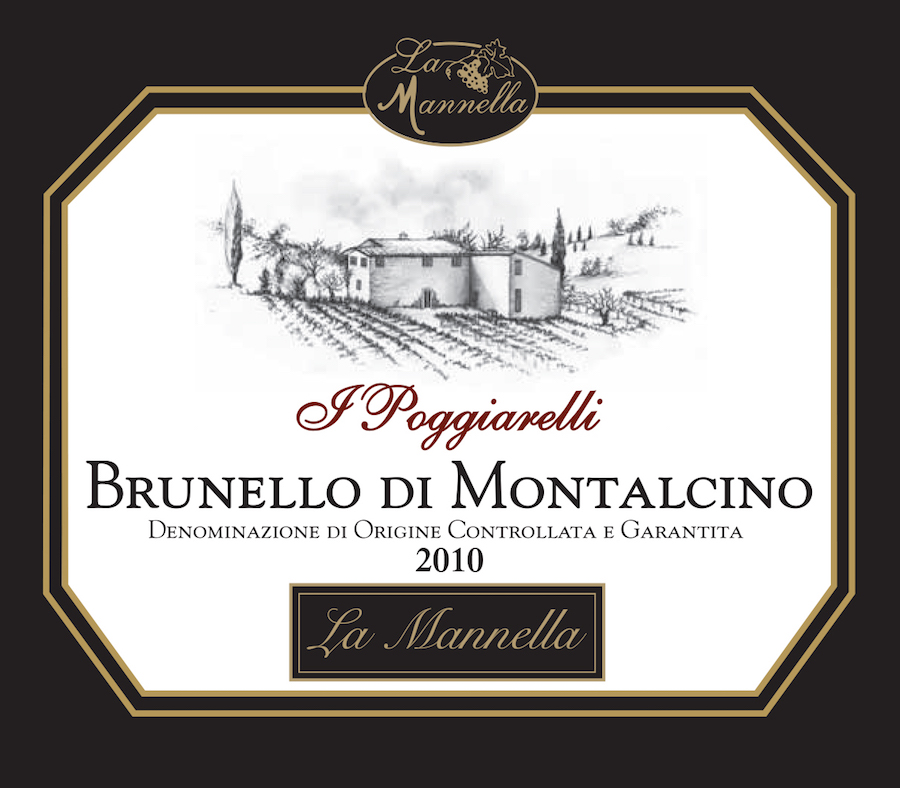
I Poggiarelli Brunello di Montacino
La Mannella 2010 ($95)—With only 334 cases
produced in 2010, this single-vineyard brunello
shows why this Tuscan wine is so widely respected.
It spends 36 months, total, in wood, so it’s as
soft as velvet but tastes as if it just came out
of the ground.
Ideal for lamb and beef.
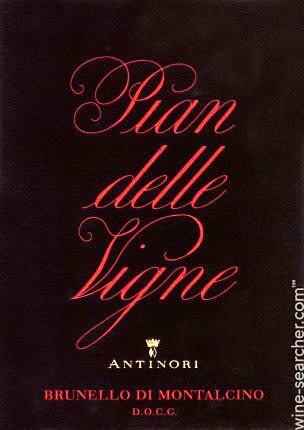
Antinori Pian delle Vigne Brunello
di Montalcino 2009 ($50)—Ages ago, drinking a
brunello less than 50 years old was considered
folly, but, albeit with very mixed results, much
younger brunellos have proven delicious upon
release. This
one, from Antinori, is certainly well priced
enough either to drink right now or to wait
without worrying how time treats it. The Antinori
pedigree has always guaranteed the high quality
level of their wines.
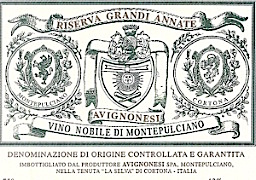
Avignonesi Grandi Annate Vino
Nobile di Montepulciano 2011 ($86)—With 100% sangiovese, the
wine shouts Tuscany, and vino nobiles have too
long dwelt in the shadow of brunello and so-called
Super Tuscans.
Earthier and in some ways more honest, vino
nobiles have heart and soul in equal measure,
robust, long-lived, and Avignonesi’s is produced
only in the finest years (“Grandi Annate”), of
which 2011 was one of the best.
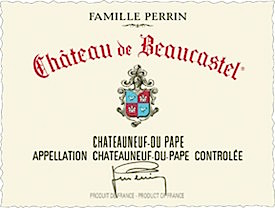
Famille Perrin Château de Beaucastle 2012 Châteauneuf-du-Pape ($180)—Can a wine, like lasagna, taste better the next day? This Southern Rhône beauty did, perhaps because oxygen opened the wine up, from being quite bold and concentrated, with 14.5% alcohol, to delectably smooth and inspirited. The vintage was one of the best of the decade, and I may have drunk it too young, but it was a pleasure.
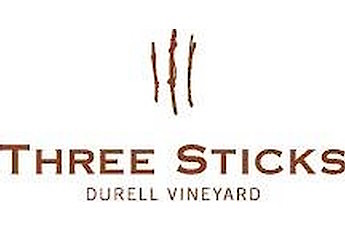
Three Sticks Bien Nacido Vineyard 2012 ($60)—Owner Bill Price, whose
moniker back in his surfing days was “Billy Three
Sticks,” has put as much personality into this
splendid 13. 9% pinot noir as into his life’s
other passions.
(He also owns Durell Vineyard, below.) The
wine is made from grapes planted on the Santa
Maria Mesa, which gives its soil and grapes the
cooling climate
and minerals of the Pacific Ocean via
morning fog.
The vintage was an excellent one, and it
shows in the wine’s complexity, gaining just the
right amount of oak from 16 months barrel ageing.

Lutum Pinot Noir Durrell Vineyard 2013 ($60)—I have more than
occasionally inveighed against overly extracted,
high alcohol Sonoma pinots, but Lutum seems to
have hit the sweet spot. The pinot tastes like
pinot—so often not the case in California—with
mid-weight heft, though the wine faded by the end
of a meal of medium-rare veal chops. Lutum
(Latin for “soil”) shows its coastal terroir well. The
same winery’s 2013 Durell Vineyard Chardonnay is
good but for $50 a bottle, it should be
extraordinary
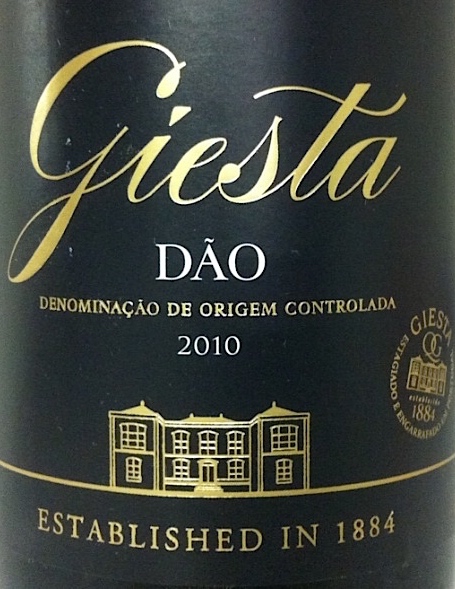
Quinta da Giesta Dão 2011 ($17)—Portuguese reds get better and
better, and the vignerons there have had long
experience with this workhorse wine, which has
never been expensive. This one is simple,
straightforward and ripe, to be drunk right now
with any red meat off the grill. It’s a
wine not worth discussing, just drinking with a
smile on your face.
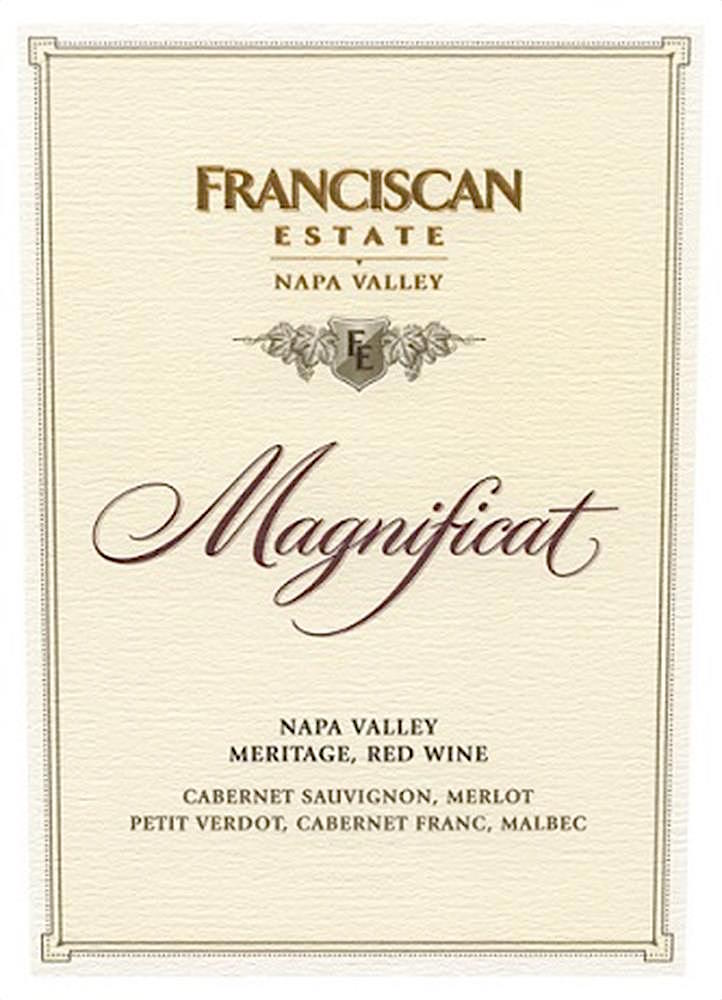
Franciscan Magnificat Meritage 2012 ($50)—So-called Meritage wines,
which use the grape components of Bordeaux, have
long ago proven to be among the finest reds out of
Napa Valley, and this is a superb example (named
after a Bach canticle), very rich but, even at
14.5% alcohol, not overripe, despite the merlot
being picked quite late in autumn. Franciscan has
been making this wine now for three decades and it
gets better all the time.
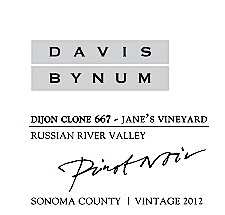
David Bynum Jane’s Vineyard Pinot
Noir 2013 ($35)—In a lighter style of
pinot, this example cannily triumphs over 14.5%
alcohol by its balance, spice, and fine
minerality.
Age may not improve what is right now a
good wine for the summer of 2015, but the price is
easy to digest.
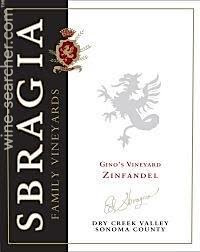
Sbragia Gino’s Zinfandel 2012 ($34)—According to Ed Sbragia, “For
32 years I drove to Napa and made Cabernet and
Chardonnay, but when I came home we drank
Zinfandel.” I can understand the sentiment, and
Sbragia’s blend of 94% zin, 4% carignane, and a
sprightly 2% petite sirah, aged for 18 months,
fits proudly among the state’s best examples. There’s
no getting away from its high, 15.1% alcohol, but
then again, that’s probably where zin should be
for a wine more complementary to cheeses and
roasted nuts than with meat courses.
❖❖❖
WHY THERE'LL
ALWAYS BE A SCOTLAND
A
McDonald’s branch in Glasgow known for frequent
altercations between customers (the police have
reportedly been called to the restaurant 200 times in
the past 14 months) is attempting to calm its customers
down by piping in classical music by Handel, Beethoven,
Bach, and others.“We heard classical music being played
the other night and it was actually quite pleasant,”
said one regular. “It’s better than the kind of rave
music we’ve heard before so I think they may be on to
something.”

TRAVEL ARTICLES
WE
NEVER FINISHED
READING
“As you fly above North Carolina, about halfway
between the mountains and the coast, you notice one
thing that stands out: the color green.”—Rosemary Plybon
Kennerly, “The Triad Thrives,” Delta Sky (June
2015).
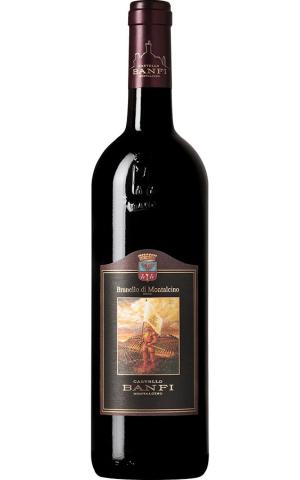 THE 2010 VINTAGE OF
BRUNELLO DI MONTALCINO
THE 2010 VINTAGE OF
BRUNELLO DI MONTALCINO AMONG THE BEST OF TWO CENTURIES
If
you’re an Italophile, you may have heard that 2010
vintage Brunello – released in January 2015 – is
historic. Only the 15th time the Brunello
Consorzio has awarded five stars since it began using
the star-rating system in 1945. But don’t take it from
us – hear what the experts have to say. According to
Master Sommelier Fred Dame, “The critics are
saying that the 2010 Brunello is the best in some
200 years. Any anytime you hear that much hype,
you’re skeptical because you’ve heard it all
before—but this is the real deal.”
And Antonio Galloni of Vinous Media
stated, “2010
will go down as one of the great all-time vintages
in Tuscany…Stylistically, the 2010s remind me of the
2004s, but with more fruit and overall depth. The
finest wines should age gracefully for years, and in
some cases, decades….”
With 2010 being such a fantastic
vintage, critics have been gushing over the offerings
from Montalcino’s leading producer, Castello Banfi. For example, Castello
Banfi
Brunello 2010 awarded Best in Class and a Gold
Medal at the Los Angeles International Wine
Competition. For 76 years, the Los Angeles
International Wine Competition has showcased the
finest domestic and international vintages through a
wine-tasting event that is widely considered to be one
of the most prestigious in the United States. An
esteemed panel of judges use a blind-tasting method,
maintaining the highest standards of integrity and
professionalism.
Previously in another blind
tasting, The Winemaker Challenge, Castello Banfi was
named Winery
of the Year, Europe, in part for the beautiful
showing of its 2010 Brunello. Robert Whitley,
competition organizer and esteemed wine critic,
writes: “Castello
Banfi was named Winery of the Year, Europe. Along
with its Banfi division in Italy’s Chianti region,
the Castello amassed 11 medals, including four
platinum awards. The star of the Banfi show was its
2010 Brunello di Montalcino ($75) [Best of Class
Italian], but its 2013 San Angelo Pinot Grigio ($19)
also won Best of Class. Banfi also won platinum with
its 2011 Chianti Classico Riserva ($19). The latter
two wines are a steal at the price.”
Furthermore, Castello
Banfi receives praise for its 2010 Brunello
outside the world of competitions in the press and
among sommeliers. A few examples, first for Castello
Banfi
Brunello di Montalcino 2010:
“Fabulous
aromas of dried rose petal, orange peel, and oyster
shell with hints of dark fruits… 95 points." James Suckling, Tasting Report,
December 2014.
“Aromas
of flowers, spices and cherry are prevalent. This is
juicy, fresh and full bodied on the palate with lots
of refined silky tannins. Well balanced and very
impressive. 92-95 points.” --John Fodera, Tuscan Vines,
March 2015.
“Earthy, but not rustic, showing plums and deep berry fruit.” --Somm Journal, April/May 2015.
“This
wine will age beautifully because of the balance.”--Fred Dame,
Master Sommelier.
And for Castello
Banfi
Poggio alle Mura Brunello di Montalcino 2010: “A
wine that shows such layered and in-depth character.
97 points."-- James Suckling, Tasting Report,
December 2014.
“Opens to brooding dark concentration and an
impressive sense of depth. The aromas that
characterize the wine are in a school of their own.
Instead of the standard red cherry and rose, this
expression of Sangiovese gives you rich layers of
blackberry pie, Indian spice, cured meat, wet
terra-cotta, tar and black licorice. The tannin
management is excellent and there’s a distant point
of textural firmness that will soften with a few
more years of cellar aging. 95 points.” eRobertParker,
February 2015.
“I
hate to use the word ‘classic’ but this is it – dark
cherry, dark plums, firm, not harsh
tannins…balanced.”--Master Sommelier, Fred Dame.
“Deep
ruby red. Very clean and intense on the nose, strong
aromas of blackberry, and prune, together with
captivating notes of Rose and seeds of coriander.
Compact and concentrated at first, in a second
moment it shows very ripened berries, and it opens
with mature and elegant tannins, sweet and creamy,
very long, it invites to drink a full bottle! 94
points” --Falstaff Magazine.
“Loads
of wild berry and floral aromas on the nose. As it
opens, it adds a touch of mocha and spice. Very
attractive to smell.
On the palate there is a masculine full
bodied core of ripe wild berry fruit. Chewy,
quite tannic but balanced well with a long, fruity,
juicy finish.
Spices and toast dot the finish as well. This is
really good, but clearly needs time. 92-95
points.”--John Fodera, Tuscan Vines,
January 2015.
You can learn more about the 2010
vintage, and share your thoughts about it, at BanfiBlog.com
❖❖❖
Any of John Mariani's books below may be ordered from amazon.com.
 I'm proud and happy to announce that my
new book, The Hound
in Heaven (21st Century Lion Books), has just
been published through Amazon and Kindle.
I'm proud and happy to announce that my
new book, The Hound
in Heaven (21st Century Lion Books), has just
been published through Amazon and Kindle. It is a novella, and for anyone who loves dogs, Christmas, romance, inspiration, even the supernatural, I hope you'll find this to be a treasured favorite. The story concerns how, after a New England teacher, his wife and their two daughters adopt a stray puppy found in their barn in northern Maine, their lives seem full of promise. But when tragedy strikes, their wonderful dog Lazarus and the spirit of Christmas are the only things that may bring back his master back from the edge of despair.
WATCH THE VIDEO!
“What a huge surprise turn this story took! I was completely stunned! I truly enjoyed this book and its message.” – Actress Ali MacGraw
“He had me at Page One. The amount of heart, human insight, soul searching, and deft literary strength that John Mariani pours into this airtight novella is vertigo-inducing. Perhaps ‘wow’ would be the best comment.” – James Dalessandro, author of Bohemian Heart and 1906.
“John Mariani’s Hound in Heaven starts with a well-painted portrayal of an American family, along with the requisite dog. A surprise event flips the action of the novel and captures us for a voyage leading to a hopeful and heart-warming message. A page turning, one sitting read, it’s the perfect antidote for the winter and promotion of holiday celebration.” – Ann Pearlman, author of The Christmas Cookie Club and A Gift for my Sister.
“John Mariani’s concise, achingly beautiful novella pulls a literary rabbit out of a hat – a mash-up of the cosmic and the intimate, the tragic and the heart-warming – a Christmas tale for all ages, and all faiths. Read it to your children, read it to yourself… but read it. Early and often. Highly recommended.” – Jay Bonansinga, New York Times bestselling author of Pinkerton’s War, The Sinking of The Eastland, and The Walking Dead: The Road To Woodbury.
“Amazing things happen when you open your heart to an animal. The Hound in Heaven delivers a powerful story of healing that is forged in the spiritual relationship between a man and his best friend. The book brings a message of hope that can enrich our images of family, love, and loss.” – Dr. Barbara Royal, author of The Royal Treatment.
 |
The Encyclopedia of American Food and Drink by John F. Mariani (Bloomsbury USA, $35) Modesty forbids me to praise my own new book, but let me proudly say that it is an extensive revision of the 4th edition that appeared more than a decade ago, before locavores, molecular cuisine, modernist cuisine, the Food Network and so much more, now included. Word origins have been completely updated, as have per capita consumption and production stats. Most important, for the first time since publication in the 1980s, the book includes more than 100 biographies of Americans who have changed the way we cook, eat and drink -- from Fannie Farmer and Julia Child to Robert Mondavi and Thomas Keller. "This book is amazing! It has entries for everything from `abalone' to `zwieback,' plus more than 500 recipes for classic American dishes and drinks."--Devra First, The Boston Globe. "Much needed in any kitchen library."--Bon Appetit. |
"Eating Italian will never be the same after reading John Mariani's entertaining and savory gastronomical history of the cuisine of Italy and how it won over appetites worldwide. . . . This book is such a tasteful narrative that it will literally make you hungry for Italian food and arouse your appetite for gastronomical history."--Don Oldenburg, USA Today. "Italian
restaurants--some good, some glitzy--far
outnumber their French rivals. Many of
these establishments are zestfully described
in How Italian Food Conquered the World, an
entertaining and fact-filled chronicle by
food-and-wine correspondent John F.
Mariani."--Aram Bakshian Jr., Wall Street
Journal.
"Equal parts
history, sociology, gastronomy, and just
plain fun, How Italian Food Conquered the
World tells the captivating and delicious
story of the (let's face it) everybody's
favorite cuisine with clarity, verve and
more than one surprise."--Colman Andrews,
editorial director of The Daily
Meal.com. "A fantastic and fascinating
read, covering everything from the influence
of Venice's spice trade to the impact of
Italian immigrants in America and the
evolution of alta cucina. This book will
serve as a terrific resource to anyone
interested in the real story of Italian
food."--Mary Ann Esposito, host of PBS-TV's
Ciao
Italia. "John Mariani has written the
definitive history of how Italians won their
way into our hearts, minds, and
stomachs. It's a story of pleasure over
pomp and taste over technique."--Danny Meyer,
owner of NYC restaurants Union Square
Cafe, The Modern, and Maialino.
|
 |
 |
 |
 |
 |
 |
 |
 |
 Everett Potter's Travel Report:
Everett Potter's Travel Report: 
 Eating Las
Vegas is the new on-line site for
Virtual Gourmet contributor John A. Curtas.,
who since 1995 has been commenting on the
Las Vegas food scene and reviewing
restaurants for Nevada Public Radio.
He is also the restaurant critic for KLAS
TV, Channel 8 in Las Vegas, and his past
reviews can be accessed at KNPR.org.
Click on the logo below to go directly to
his site.
Eating Las
Vegas is the new on-line site for
Virtual Gourmet contributor John A. Curtas.,
who since 1995 has been commenting on the
Las Vegas food scene and reviewing
restaurants for Nevada Public Radio.
He is also the restaurant critic for KLAS
TV, Channel 8 in Las Vegas, and his past
reviews can be accessed at KNPR.org.
Click on the logo below to go directly to
his site.

Tennis Resorts Online: A Critical Guide to the World's Best Tennis Resorts and Tennis Camps, published by ROGER COX, who has spent more than two decades writing about tennis travel, including a 17-year stretch for Tennis magazine. He has also written for Arthur Frommer's Budget Travel, New York Magazine, Travel & Leisure, Esquire, Money, USTA Magazine, Men's Journal, and The Robb Report. He has authored two books-The World's Best Tennis Vacations (Stephen Greene Press/Viking Penguin, 1990) and The Best Places to Stay in the Rockies (Houghton Mifflin, 1992 & 1994), and the Melbourne (Australia) chapter to the Wall Street Journal Business Guide to Cities of the Pacific Rim (Fodor's Travel Guides, 1991).


MARIANI'S VIRTUAL GOURMET
NEWSLETTER is published weekly. Editor/Publisher: John
Mariani.
Editor: Walter Bagley. Contributing Writers: Christopher Mariani,
Robert Mariani, Misha
Mariani,
John A. Curtas, Edward Brivio, Mort Hochstein,
Andrew Chalk, Dotty Griffith and Brian Freedman. Contributing
Photographers: Galina Dargery, Bobby
Pirillo. Technical Advisor: Gerry McLoughlin.
To un-subscribe from this newsletter,click here.
© copyright John Mariani 2015

